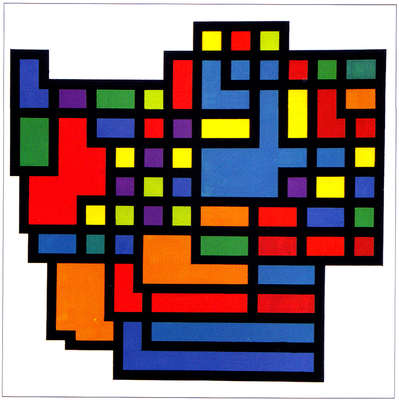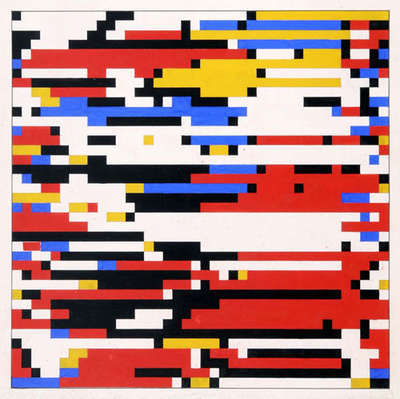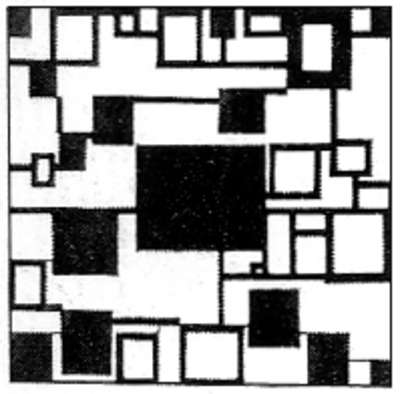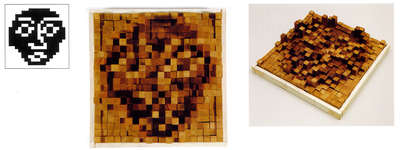Hiroshi Kawano was among the very first in the world who experimented with a computer to generate works that could enter the domain of visual art, and be accepted as such. His pioneering position is exceptional insofar as he approached the field of “digital art” from philosophy, i.e. neither from mathematics/engineering (like Nees, Noll, Nake) nor from fine art (like Csuri, Mohr, Molnar, or Cohen and others). (http://www03.zkm.de/kawano/)
In 1964, he published first designs that had been calculated at the University of Tokyo with the help of a digital computer: it was an OKITAC 5090A. These works were shown in Europe in 1968 at the Tendencies 4, Computers and Visual Research exhibition in Zagreb, most likely the first of Kawano’s participations at exhibitions.
5
At that time, Kawano was teaching aesthetics at the Metropolitan College of Air Technology. He developed his own programs to compute arrangements of colored, axis-aligned rectangles. He used the (line-printer) output of such calculations to realize colored images by hand. He had people to help him do this.
Kawano also experimented with texts, sculpture, and music.
Kawano says that Max Bense was an important source of inspiration for his algorithmic art. His approach was strongly influenced by cybernetics and Bense’s information aesthetics. (Kawano read, spoke, and wrote German. His archive, now at ZKM in Karlsruhe, Germany, contains many of Bense’s publications.) He participated in the Tendencies 4 and 5 symposia and exhibitions at Zagreb, Croatia. He published many articles on the relation between aesthetics, art, and Artificial Intelligence. Theories of the mind as information processor have interested him greatly.
Kawano is one of the most important pioneers of computer art, with his first publication dated September 1964 (in Japanese in the IBM Review). In 2010 the Center for Art and Media (ZKM) in Karlsruhe, Germany, acquired most of his works and his archive. A first retrospective exhibition was arranged at ZKM by curator Margit Rosen (from 24 Sept. 2011 to 8 Jan. 2012). http://on1.zkm.de/zkm/stories/storyReader$7106.
The materials now at ZKM comprise about 80 works of art, all his programs and studies, documents and audio recordings (literary and musical computer experiments), documentations of his exhibitions, correspondence with important protagonists from the heroic phase of computer art, all his publications, as well as a large collection of computer art and aesthetics publications from Japan, Europe, and the USA.
He donated these items to a museum in Germany to honor Max Bense for the inspiration from this philosopher and theoretician of aesthetics.
" … a computer artist should be a programmer who can teach his computer to produce works of art by itself, and furthermore know about the digital computing behavior of his computer in detail. It is never a computer artist, but a computer itself that produces works of art; a computer artist only helps his computer acting as a programmer.
… computer art should not be confused with a style or a school of the modern art using a computer as an innovative tool of an artist who has been tired of traditional techniques of art. As the latter usually seems to be called ‘computer art,’ I would like to call the former art of computer ‘art computer.’ "Quoted from Artist and Computer









